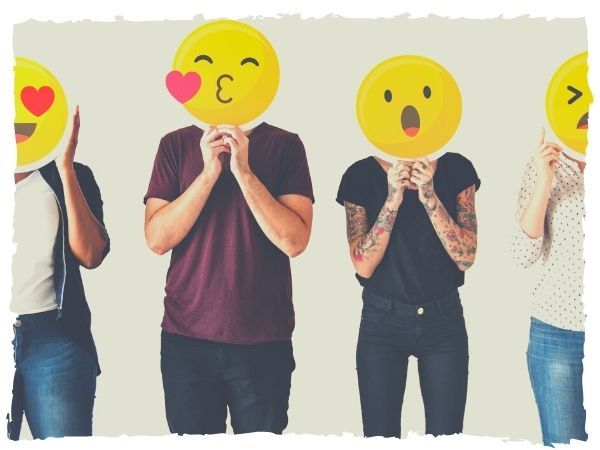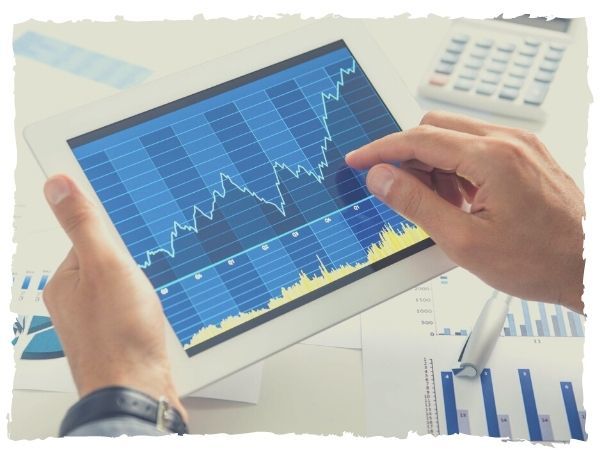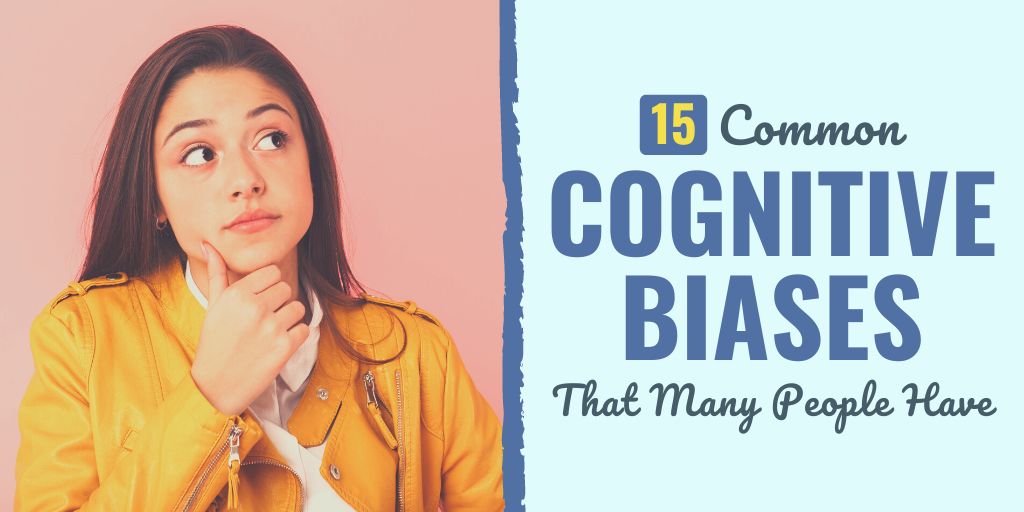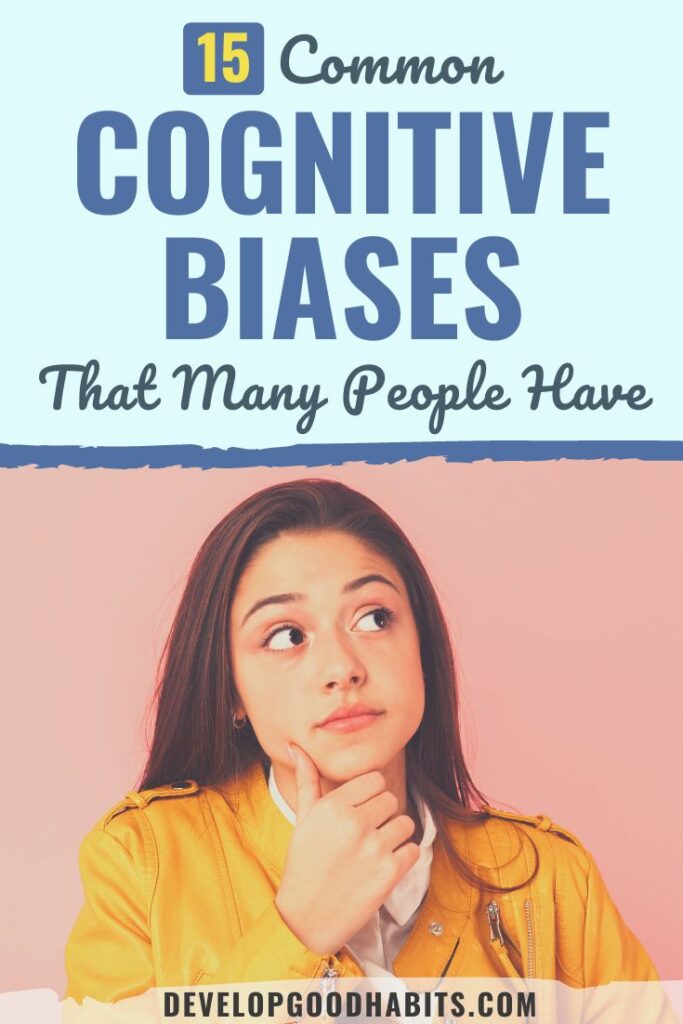There might be affiliate links on this page, which means we get a small commission of anything you buy. As an Amazon Associate we earn from qualifying purchases. Please do your own research before making any online purchase.
Let’s solve a quick math problem.
A bat and a ball cost $1.10. The bat costs $1.00 more than the ball. How much does the ball cost?
Ten cents, right?
At least that’s what first came to mind for me when reading this first question in a series of three in the Cognitive Reflection Test.
But the intuitive answer of ‘ten cents’ is wrong, and if you are one to solve problems analytically, you would know this immediately. Let’s look at the logic:
If the ball was 10 cents and the bat was one dollar more than the ball, the bat would cost $1.10. Adding the presumed price of the ball on top of this would give you a total of $1.20. This means the ball has to cost $0.05, and the bat has to cost $1.05, which comes out to $1.05 + $0.05 = $1.10.
If you initially got the answer wrong like I did, the explanation for the correct answer makes obvious sense–but why was this not obvious in the first place?
We often simplify complex problems so we can solve them quickly. In the case of the ball and the bat, it’s common to unconsciously replace “$1.00 more than” with the absolute statement of, “The bat costs $1.00.” This math is simpler–if the two items cost $1.10 and the bat is one dollar, the ball has to be 10 cents.
So, what’s the point?
There are a lot of reasons that we take “mental shortcuts” when making decisions or judgments, which are called cognitive biases. Often, these quick mental processes have to do with relating the problem at hand to past experiences or making sweeping generalizations.
In this article, we are going to define cognitive biases and then look at 15 examples of common biases that many people hold onto that can cloud rational thinking.
Let’s get to it.
What Are Cognitive Biases?
Cognitive biases are mental mistakes that people make when making judgments about life and other people. They typically help us find shortcuts that make it easier to navigate through everyday situations.
However, as people use their own perceptions to create what they believe to be a reality, they often bypass any rational thinking.
People tend to use cognitive biases when time is a factor in making a decision or they have a limited capacity for processing information. And, without considering objective input, one’s behavior, judgment, or choices may end up being illogical or unsound.
Like most things, cognitive biases have their benefits and their drawbacks. For example, imagine that you’re walking home alone late one night and you hear a noise behind you.
Instead of stopping to investigate, you quicken your pace with your safety in mind. In this case, timeliness is more important than accuracy–whether the noise was a stray cat rustling in some leaves or it was a perpetrator trying to harm you–you’re not likely to wait around to find out.
Alternatively, think of a jury judging someone who is being convicted of a crime. A fair trial requires the jury to ignore irrelevant information in the case, resist logical fallacies such as appeals to pity, and be open-minded in considering all possibilities to uncover the truth.
However, cognitive biases often prevent people from doing all of these things. That said, because cognitive biases have been studied extensively, researchers know that jurors often fail to be completely objective in their opinions in a way that is both systematic and predictable.
Let’s take a look at 15 specific cognitive biases that many people experience. After reading this article, you will be able to spot these biases in your everyday life, which can prompt you to take a step back and further analyze a problem before coming to a conclusion.
15 Common Cognitive Biases Many People Have
1. Bandwagon Effect (AKA “herd mentality” or “groupthink”)
The bandwagon effect is a cognitive bias that occurs when people place a greater value on conformity than expressing (or having) their own opinions, which can result in irrational decision-making.
The desire for cohesion in a group may lead to a tendency for its members to agree with the group at large without doing any critical thinking individually to come to their own conclusions.
The bandwagon effect, which is similar to the bandwagon fallacy, averts individuals from exploring alternative solutions or questioning the norm–often through feelings of peer pressure.
People tend to avoid ruffling any feathers in a group in fear of being perceived in a negative way by other members–or, people just assume that the right conclusion has been made since so many people agree with it.
This cognitive bias can be problematic because it prevents innovative thinking or brainstorming sessions in which groups develop improved policies and procedures.
Without new, constructive opinions being presented, groups are hindered from achieving any type of growth, which can be especially costly if they’re facing new challenges.
In fact, studies have shown that if a group or organization is facing an external threat or is under a significant amount of stress, they tend to make more errors in their decision-making and even make repeat decisions that they know have been ineffective in the past.
The bandwagon effect can also lead to risky behavior due to the overestimation of the group’s power, inflexible attitudes, and a lack of group members’ freedom of expression.
Of course there are extreme examples of this cognitive bias such as cult followers, but you may also see this type of cognitive bias in everyday decisions such as fashion trends, diet fads, or political votes.
2. Choice Supportive Bias
People often defend their choices after making them and may even remember their choices as being better than they really were.
For example, let’s say that even though most of your friends own an iPhone, you decided to buy a Google Pixel. After doing so, you may be more likely to ignore any faults that you find in your Pixel but be quick to notice the downsides of having an iPhone.
Similarly, you may convince yourself that the “advantages” of having an iPhone are not really that great, but be eager to brag about the advantages of your Pixel when talking to other people.
People don’t like to admit that they made a bad decision (if, in fact, your decision turned out to not be as great as you were expecting). And, once you make a decision, your evaluation of the quality of the choice may become biased, and subsequently influence your decisions in the future.
3. Dunning-Kruger Effect
The Dunning-Kruger effect is a cognitive bias that describes situations in which people overestimate their ability to do something or their knowledge about a certain subject. This typically happens due to a lack of self-awareness, preventing someone from accurately evaluating their own skills.
This concept was developed by Cornell psychologists, David Dunning and Justin Kruger, who found that those who rated their abilities in logic, grammar, and sense of humor to be around the 62nd percentile when compared to their peers were in fact around the 12th percentile.
As it turns out, many people mistakenly consider themselves to be above average in a variety of skills.
According to the researchers, this is because they lack metacognition, which is the ability to look at one’s own abilities in an objective way. And, those with the least amount of metacognition are also those who are the most likely to overrate their abilities.
4. Egocentric Bias
The egocentric bias leads to the projection of one’s own thoughts, beliefs, and feelings onto others, particularly when the people are close friends or family.
This cognitive bias also limits people’s ability to be empathetic because it causes people to mainly focus on their own emotions, therefore ignoring how other people feel.
The egocentric bias can also lead people to believe that outcomes that are in their favor are fair–knowing full well that if that same outcome were to have favored others instead, they would have considered it to be unfair.

For example, people with egocentric bias may believe they deserve more than others when divvying up positive rewards, such as profits.
However, if that same group is instead receiving blame because they failed, this person would believe they deserved less blame than the others and refuse to take responsibility for any mistake that was made.
5. Survivorship Bias
Survivorship bias is a cognitive bias in which we place undue emphasis on success stories without taking past failures into full account. Consider this: for every major success in the world, there are thousands of failures who started out with the same goal.
But stories of failure are not as widely talked about as those of triumph, so they often don’t get taken into account. As we hear one success story after another, we start to overestimate the likelihood of being successful as we disregard the initial number of players.
Take some well-known success stories for example, like Bill Gates, who dropped out of college. He went on to become a billionaire, but most people who dropout of college don’t experience this same success.
And while people can learn from the work ethic and habits of Bill Gates, you can’t expect to achieve the same results by doing exactly what he did.
Survivorship bias leads to false beliefs of cause and effect. People believe correlation exists without considering all of the factors. And while success stories of beating the odds are encouraging, we can’t forget about those who failed and assume beating the odds is the norm.
6. Pessimism Bias
The pessimism bias leads people to overestimate the likelihood that something negative will happen and underestimate the likelihood that something positive will happen, especially when it comes to considering the potential outcome of future events.
For example, this cognitive bias may lead someone to believe they’re going to get fired for making a mistake, even though all of their other work up to that point had been great. Or, it may make someone give up on trying to reach their goals by making them believe they won’t succeed no matter how hard they try.
The pessimism bias can cause people to make irrational decisions and potentially lead to a variety of mental health issues and poor emotional outcomes.
However, it can also have positive effects, such as encouraging people to increase their preparation for an upcoming test or help people improve their ability to cope with negative situations when they arise.
7. Anchoring Bias
Quick question: Do you know how many people climbed Mount Everest in 2018?
Unless you’re an expert in this field, you would likely have to take a guess–which can be tough if you have little (or no) factual information to go on.
So, to come up with a guess, we have to be resourceful by relying on mental shortcuts to estimate the answer. However, doing so doesn’t always produce an accurate response, and cognitive biases often influence our answers.
The anchoring bias is one that occurs when we consider what information we do know to give us a starting point or a baseline to make a judgement. The problem with this is that we aren’t picky when determining a focal point, and often rely on the first point of reference we can think of.

Psychologists Amos Tversky and Daniel Kahneman conducted a study on the anchoring bias by having participants spin a wheel of numbers before estimating the percentage of countries in Africa belonging to the UN.
The researchers found that those who landed on a higher number when spinning the wheel made much higher estimates for the percentage of UN countries in Africa than those whose wheel stopped on lower numbers.
The entirely unrelated number on the wheel provided participants with a cognitive “anchor” for the answer to the unconnected geography question.
8. The Framing Effect
This cognitive bias occurs when one’s decisions are swayed depending upon how information is presented through different phrasing or emphasis. This is a great tool for advertisers to use when trying to sell a product.
People tend to avoid potential loss, which is why we find it attractive when positive features of an option are highlighted rather than negative ones.
Consider this: Let’s say you’re presented with two identical bottles of hand sanitizer, but one says, “Kills 96% of germs” and the other says, “4% of germs are unaffected by this product.” Do you think you would be more inclined to buy the first bottle?
Researchers have found that people perceive losses as being more significant than equivalent gains–so if you lose $10, your feelings of frustration will be stronger than your feelings of joy if you win $10.
Because we want to avoid loss, we tend to look for options that guarantee a gain of some sort, and the wording of a claim can impact whether or not we believe it will produce a gain or a loss.
So, the framing effect “frames” statements in a way that can potentially convince you of something one way or another.
9. Recency Bias
Recency bias explains the phenomenon of remembering something that has occurred recently more easily than remembering something that happened a while ago.
This bias can have a negative impact on investors who fail to look at the bigger picture of financial trends when making trading decisions and only focus on what the market has done in the past few months.
The recency bias may also impact employees during a review period if their supervisor makes this cognitive mistake.
If an employee has made a recent error, but their overall performance is good and they have done several impressive things over the past quarter, their supervisor may put undue focus on their mistake without putting it into proper perspective with their comprehensive work performance.
This could also work the opposite way for an employee who has struggled in the past, but has made a recent “win” for the company.
10. Status Quo Bias
People are often resistant to change, but the status quo bias takes this idea to the next level. It states that even when only a small transition cost is required to make a change that will have a big impact, people still default to the “status quo” or whatever they’re familiar with.
The status quo bias could be explained by people’s feelings of loss aversion, the sunk cost fallacy mindset, a desire to feel in control, or the action-effect, which is based on an observation that people feel more regret after taking new actions that result in bad outcomes than they do for bad consequences that result from inaction.
While the status quo bias is often seen as being irrational, standing by seemingly safe choices that have worked in the past is common when one is faced with a high amount of uncertainty or is overwhelmed with too many choices.
11. Empathy Gap
The hot-cold empathy gap is a cognitive bias that leads to a difficulty in understanding the current feelings or emotions of others who are in a different mental state than oneself.
The video below give a quick overview of the hot-cold empathy gap and how it can often destroy your attempts to break a bad habit.
Empathy gap can prevent people from considering how certain mental states influence other people’s behavior and judgments. Essentially, this means that when person A is happy, he has a hard time understanding the perspective or predicting the actions of person B, who is having a very stressful day.
When it comes to misunderstanding others, the empathy gap can cause someone who is having a hostile reaction to an issue in a meeting to struggle to comprehend the perspective of a colleague who is looking for a peaceful resolution.
This cognitive bias can also make it difficult for someone to understand their own future perspectives. So, if a person feels relaxed right now, the empathy gap can make it hard for them to imagine feeling angry.
It’s important to understand the empathy gap because it has strong implications regarding the interpretation and prediction of your own behavior and that of other people.
12. The Outcome Bias
Let’s say you decide to invest some money in real estate after finding out a friend made a large return on their investment from buying real estate when interest rates were very low.
But, instead of looking at all of the factors that went into your friend’s success such as the location of the property, any upgrades that were made, or the timing of the sale, you focus solely on the fact that your friend made money.
Fast forward a few years and you, too, have ended up with a financial gain from your investment. When thinking in terms of the outcome bias, this means you’ll consider your initial decision to be a good one, regardless of the fact that it was uninformed.
Alternatively, let’s say you lost a lot of money. You would then think your decision to invest in real estate was a bad idea. But, you’re only making this judgment after all is said and done instead of equipping yourself with enough information from the beginning to make an informed decision.

People tend to determine the quality of their decisions after seeing the results rather than analyzing the current circumstances and trying to predict the impact of their actions.
This is erroneous because without analyzing all of the influential factors, you can’t make an informed decision as to whether or not the outcome is likely to be good.
Placing too much emphasis on a past positive outcome and assuming conditions have remained the same, meaning the decision is still a good one is what defines outcome bias.
13. Confirmation Bias
People tend to pay attention to things that confirm what they already know (or believe) to be true or interpret information in such a way that it lines up with their existing beliefs. Similarly, people often undervalue or reject information that goes against their beliefs.
Consider the way people choose one news source over another–they want to read (or watch) whatever aligns with their perspectives. Many news sources are heavily biased, even when presenting the same topics as other sites or channels, so people tend to watch news from a source that validates their beliefs.
According to Simply Psychology, there are a few reasons why people have confirmation bias, including:
Confirmation bias is especially present–and dangerous– during presidential campaigns. When there is an election on the horizon, people pay attention to the information that confirms their opinions about certain candidates while ignoring information that goes against their views.
Obtaining information in such a subjective way can cause people to pick and choose what they believe about a candidate, which will influence their vote and ultimately determine who leads our country.
14. The Ostrich Bias
Have you ever left a bill sitting unopened on the counter because you knew it was going to be high, but you didn’t want to know just how high it was? Maybe you wanted to live in blissful ignorance for just a few more days?
The ostrich bias takes confirmation bias one step further by choosing to ignore negative information that is clearly present–often in hopes that if the information is ignored, it will go away.
Consider the ostrich effect when it comes to people’s decisions regarding when to seek formal diagnoses when they’re experiencing troubling health symptoms.
One study found that people’s fear of getting a serious diagnosis can lead them to ignore the health issues that they’re clearly facing, even though learning the truth sooner rather than later may be critical to their long term wellbeing.
Finally, a very unfortunate example for this site–sometimes people want to avoid finding negative information regarding their progress on their goals, so they simply stop looking for it.
So, let’s say your goal has to do with losing weight, but lately, your efforts have been lacking. If you think in terms of the ostrich bias, you will avoid weighing yourself or stop maintaining an honest food journal.
The ostrich bias occurs in situations in which people have emotional ties to information, and they also have some control over protecting themselves from it.
This is true even when avoiding the information will almost certainly reduce the quality of the person’s ultimate outcome. This is because being cognizant of the information may force the person to face disappointments that are mentally easier to avoid.
15. Availability Bias
The availability bias occurs when people overestimate the importance of the information that they have. For example, many people live in fear of dying from a terrorist attack because these stories are so often covered extensively on the news.
However, Americans are at a very low risk of being harmed by terrorists. In fact, studies have shown that your chances of dying due to terrorist activity is comparable to the chances that you will be crushed to death by unstable furniture.
But people don’t often form their beliefs upon facts, rather they hear stories on the news or from other people and narrow their thinking to this information.
Because of the fear that they incite and the loss of control people feel over their safety, terrorist attacks are frequently talked about many times over, which puts this scenario at the front of people’s minds.
However, that person who died from being crushed to death by a falling television won’t get nearly as much on-air attention as the most recent terrorist attack on our citizens.
Thinking in terms of the availability bias prevents you from taking an all-inclusive look at something by considering all of the facts.
Learn More About Other Logical Fallacies
- 5 Appeal to Nature Fallacy Examples in Media and Life
- 6 Outcome Bias Examples That Can Negatively Impact Your Decisions
- 7 Self-Serving Bias Examples You See Throughout Life
- 7 Omission Bias Examples That Negatively Impact Your Life
- 6 Authority Bias Examples That Might Impact Your Decisions
- 5 Appeal to Authority Logical Fallacy Examples
- 7 False Cause Fallacy Examples
- 7 Appeal to Ignorance Fallacy Examples
- 7 Appeal to Common Sense Logical Fallacy Examples
- 5 Post Hoc Fallacy Examples (and How to Respond to This Argument)
- Gambler’s Fallacy: 5 Examples and How to Avoid It
- 5 Appeal to Anger Fallacy Examples Throughout Life
- 7 Halo Effect Bias Examples in Your Daily Life
- 7 Poisoning the Well Examples Throughout Your Life
- 7 Either Or (“False Dilemma”) Fallacy Examples in Real Life
- 5 Cui Bono Fallacy Examples to Find Out “Who Will Benefit”
- 7 Virtue Signaling Examples in Everyday Life
- 7 Cherry Picking Fallacy Examples for When People Ignore Evidence
- 9 Circular Reasoning Examples (or “Begging the Question”) in Everyday Life
- 9 Appeal to Emotion Logical Fallacy Examples
- 9 Appeal to Pity Fallacy (“Ad Misericordiam”) Examples in Everyday Life
- 9 Loaded Question Fallacy Examples in Life and Media
- 5 Red Herring Fallacy Examples to Fight Irrelevant Information
- 9 Middle Ground Fallacy Examples to Spot During an Argument
- 5 False Equivalence Examples to Know Before Your Next Argument
- 7 Hasty Generalization Fallacy Examples & How to Respond to Them
- 6 Straw Man Fallacy Examples & How You Can Respond
- 6 False Dichotomy Examples & How to Counter Them
- 7 Slippery Slope Fallacy Examples (And How to Counter Them)
- What is the Planning Fallacy?
- How to Overcome the “Sunk Cost Fallacy” Mindset
Final Thoughts on Common Cognitive Biases
Can you think of some times in your life where you have thought in a way that lines up with some of these biases? Hopefully after recognizing that these are examples of faulty reasoning, you will know in the future to take a step back and make further considerations before coming to any type of conclusion.
You can also use this list to help you identify when other people are thinking in terms of a cognitive bias so you can be better prepared to make your own conclusions when someone is making an argument or trying to convince you of something.

Connie Mathers is a professional editor and freelance writer. She holds a Bachelor's Degree in Marketing and a Master’s Degree in Social Work. When she is not writing, Connie is either spending time with her daughter and two dogs, running, or working at her full-time job as a social worker in Richmond, VA.


